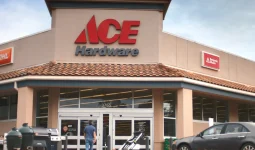There are many various types of shovels, and choosing the right one for the job might be the difference between a long day of hard work and a simple task.
Shovels are crucial garden equipment, with some designed specifically for a single duty and others serving as flexible workhorses capable of doing a variety of duties.
To properly comprehend the wide variety of different types of shovels, it is necessary to first learn about the anatomy of a shovel.
A shovel appears to be nothing more than a shovel to the inexperienced eye. Isn’t it true that if you’ve tried one shovel, you’ve tried them all? Wrong.
There are several sorts of shovels, each of which is built for a distinct purpose. You can be unhappy with the outcomes if you choose the wrong shovel for the job.
However, It can be a lot difficult to determine the shovel you require first.
We’ve extensively studied the shovel family and compiled a comprehensive list of all types of shovels to make things easier.
Continue reading to learn about the many types of shovels.
1. Edging Shovel
This shovel produces precise edges around lawns or borders, resulting in a clean, defined boundary.
Also, it has a long shaft with a little metal semi-circle attached at the bottom and a straight footplate where your feet can apply pressure.
Because you should press it straight down into the lawn or soil, the blade is usually sharp and flat.
The blade is relatively shallow because it does not need to create deep cuts to be effective.
While these are most commonly used for establishing and maintaining garden edging. They can also benefit from other activities, such as breaking up shallow plant roots.
Also, these shovels are suitable for usage in small areas where you need to be very specific to prevent hurting neighboring plants due to their narrow blade.
2. Trench Shovel

The trenching shovel, also known as a ditch shovel, has two purposes.
It can dig shallow trenches first and then clear out and tidy up more giant trenches dug by a more powerful tool.
The blade of a trench shovel is long and narrow, with a pointed tip, and is positioned at an angle furthermore, because the blade is so small.
There isn’t much room on the footplate to drive the shovel into the ground with your weight. So you’ll have to rely on arm strength instead.
Furthermore, digging anything more profound than a shallow trench would be extremely difficult and time-consuming.
Also, landscape gardeners are the most common users of trench shovels. This is one of the different types of shovels.
3. Flat Shovel
Flat shovels have a flat blade, as the name implies. Also, any shovel with a flat blade is primarily intended for scooping, and they generally have a slightly concave blade.
Similar to a squared-off spoon to aid in material transport.
They are perfect for loading wheelbarrows or other garden containers and are handy for carrying garden supplies such as soil, mulch, or gravel.
They aren’t great at digging because of the flat blade. But they include a broad footplate that helps you apply pressure to force the edge into the ground.
Also, this is useful for shallow digging activities like edging and trench cleaning. It will function best with soft soils if you want to utilize it.
Furthermore, A flat shovel is mainly used for scooping and spreading. And transporting, but it’s a versatile garden tool that you may use for various tasks.
4. Tree Planting Shovel
These shovels are built expressly for planting trees, and they make short work of a job that would take much longer with regular shovels.
The blade of a tree-planting shovel is small and ends in a curved or pointed tip because of the narrow edge.
It can dig a variety of hole sizes by working the shovel in a circular motion into the earth.
The shaft can be any length depending on the task at hand, with longer shafts being preferable for flat and even ground and shorter rods being better for hills or sloped ground.
Also, you can use these shovels to dig up a tree for transplantation or dig a fresh hole to plant a tree. Furthermore, the shovels are similar in shape to trenching shovels.
You can use them to dig shallow trenches when a long trench for a flower bed is preferable over a series of individual plant holes.
Also you can also use it to clean up more extensive trenches of pebbles and dirt. This is one of the different types of shovels.
5. Power Shovel
The term “power shovel” refers to two different types of implements. The first is essentially a gas or electricity-powered snow shovel.
These contain rotating blades that pick up and scatter snow, making it easy to clear a snowed-in route or driveway.
These are far more efficient than a typical snow shovel, but they come at a higher price. They’re a more compact and lighter version of the classic snow blower.
Furthermore, a jackhammer with a shovel attachment is the second type of power shovel.
In highly compacted soil, these are used to excavate ground or dig holes and trenches.
They’re instrumental because they’re small enough to work in places where larger machines can’t.
6. Post Hole Shovel
A post-hole shovel, sometimes known as a post-hole digger, is a form of double shovel.
It comprises two shovels that are joined together and have long, narrow, inwardly bending blades with curled tips.
The blades’ design aids the shovel in slicing through any roots or other obstacles in their path. The blades form a cylindrical shape when they are closed together.
A post-hole shovel is generally used to dig deep holes into which fence posts are put.
They accomplish this by digging, pinching, and lifting a cylinder of earth from the ground in one fast motion.
A post-hole shovel is an excellent buy if you have several post-holes to dig.
7. Handheld Shovel
Garden shovels, garden trowels, hand shovels, hand trowels. And Garden spades are all names for these shovels (though calling this a spade would be inaccurate).
These are small shovels with short shafts that can be used for several chores in the garden, such as digging out weeds, removing plants, and digging holes for new plants.
Also, these tools come in various shapes and sizes. But they all feature a narrow rounded, or pointed blade that spans roughly four inches.
A portable shovel’s blade is usually convex, allowing for better scooping. Furthermore, this is one of the different types of shovels.
8. Root Shovel
Root shovels come in various shapes and sizes, but they all have elongated triangular blades.
The edge of these blades can come to a point or be chopped off to give a piece of flattened information.
The blade’s side edges are frequently serrated, which aids in cutting through the roots of established plants.
These shovels are made to assist in removing plants and trees, whether for transplanting or disposal.
Furthermore, their blades effectively cut through old trees’ stubborn, established roots, which you may remove to allow new roots to grow and spread.
Moreover, you can also use these shovels to dig holes for new trees or plants to grow in.
9. Scoop Shovel
A scoop shovel which is one of the different types of shovels, has a significantly larger blade than ordinary shovels.
But with a slightly shorter shaft and handle, the overall height is the same.
The blade’s tip usually is flat, but you can sometimes round it. Also, scoop shovels feature a scooped form with solid side edges that help keep any material you’re moving in place.
They’re great for moving significant dirt, gravel, wood chips, and garbage.
Furthermore, these shovels are made of various materials, with aluminum scoop shovels having a shorter life expectancy than more durable metal scoop shovels.
Before purchasing a scoop shovel, think about the type of material you’ll be scooping and how much of it you’ll need to move.
10. Snow Shovel
These shovels have lengthy shafts made of various materials, including wood, metal, and plastic.
The blade is rectangular and vertically bent, and it is large and rectangular.
This form makes it easy to scoop snow from the sidewalk or front steps and toss it into the yard or anywhere you want.
Metal grooves or ridges at the blade tip of some snow shovels aid in the removal of snow and can also be used to chip away at the ice.
Snow shovels are made of various materials, with plastic or metal blades that vary significantly in size.
The most effective and efficient way to shovel snow is by using a large blade with a sharp edge and a deep curve.
Furthermore, you may wish to invest in an ergonomic snow shovel if you have a vast area to shovel snow from or if snow shoveling is a duty you must accomplish frequently.
Also, these have a curved shaft, which helps alleviate back pain caused by snow shoveling, and extra handles along the shaft, allowing you to modify your grip to more comfortable positions.
Ergonomic snow shovels will also have easy ergonomic grip handles on the hands.
11. Pointed Digger Shovel
You’ll need a pointed digger shovel if you want to dig through thick, compacted soils or even rocky soils.
The blade of this shovel will come to a sharp tip, and the edges will curve upwards somewhat.
These characteristics result in a tool that is good for both digging and holding on to the material dug up.
A lengthy wooden or metal shaft and a wide footplate characterize these shovels.
The footplate allows you to utilize your weight to dig into soil that is deeper or denser than conventional shovels can handle.
12. Round Digger Shover
Digging holes in softer soil types are best made with a round digger shovel. It has a pointed digger shovel-style blade with curved edges, but the tip is curved.
It’s perfect for planting new plants or trees and transferring bedding plants.
Also, if you have thick clay, rocky, or gravelly soil, a round digger shovel may struggle to deliver the desired results, and a pointed digger shovel might be better.
13. Folding Shovel
These little shovels fold in half to make them easier to transport.
They’re great for camping vacations and other outdoor activities when space is restricted, and it’s also a good idea to keep one in the trunk of your car in case of an emergency.
Folding shovels that are cheap have a short lifespan and are easily broken or snapped.
Invest in an all-steel construction for long-term use, as these are better ideal for heavy-duty use. This is one of the different types of shovels.
14. Square Digging Shovel
As the name implies, Square Digging Shovels feature a straight and flat blade end, which improves workability when digging trenches and edging them.
You can also use this square digging shovel to move undesired plants and shrubs if necessary.
The blade of this square digging shovel is entirely solid and straight, making it an excellent choice for digging hard, rocky soil.








